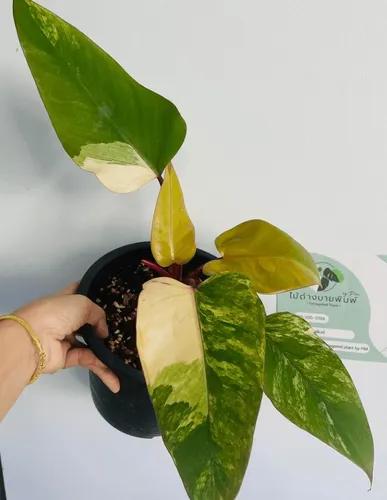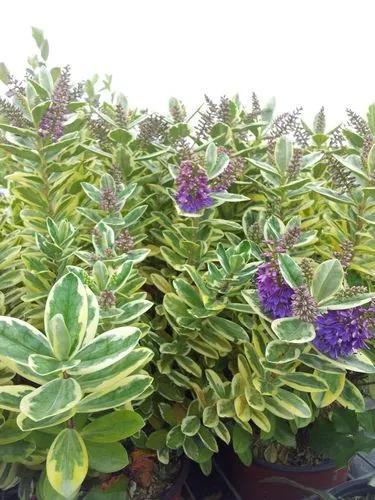Dracaena trifasciata is the most common type of sansevierias in indoor floriculture. Due to its unpretentiousness, it is widely used for adding a green touch to home interiors, office spaces, and other public places.
Snake Plant Care
Sansevieria / dracaena trifasciata
Other names: Mother-in-law’s Tongue



The snake plant is a tropical plant which comes from Africa. A rosette of three-lane sansevieria can have up to six leaves. The original species' mature leaves are dark green in hue with pale transverse streaks. The leaves can grow up to 12-50 inches (30-120 cm) long and 1-4 inches (2-10 cm) wide. The leaf is flat, lanceolate, smooth, and taper upwards before ending in a spike.
How to Care for the Plant

Water

Water it moderately and regularly, on average, once a week. Wait until the surface of the soil is dry before watering again, and never leave standing water in the saucer. Be careful not to give it too much moisture, which causes the roots to rot.
In winter, let it rest: reduce watering considerably and let the soil dry much more deeply.
Use lukewarm water that will not cause thermal shock. Apply a diluted green plant or cactus fertilizer every 3 weeks.

Pruning

There is no need for regular pruning, however, you can trim the plant for aesthetic purposes. Remove damaged and yellow leaves on the plant by cutting them at the base with a clean, sharp knife.

Fertilizer

In the spring and summer, fertilizing is done once a month with phosphorus-potassium fertilizers. An excess of nitrogen is likely to damage the root system. Top-dressing is not necessary if the plant grows at low temperatures.

Sunlight

A plant needs a lot of bright light to develop properly. If the plant is placed on the south window sill, it will require shading on hot summer days. The plant can tolerate low lighting conditions, but it will affect the growth rate and brightness of the foliage.

Soil

Any soil is suitable for planting, but a good drainage layer is required to prevent root rotting. Still, potting mix for succulent plants will be the best choice.
To pot the Snake plant follow these steps:
- Choose a pot (with a hole in the bottom), neither too small nor too large, to allow the rhizomes and roots on the surface to take their place.
- Prepare a mixture of 2/3 soil and 1/3 sand. Lay out a bed of clay or gravel balls or a few pieces of sandstone to promote drainage.
- Cover with a little mixture of 2/3 of potting soil and 1/3 of sand, being careful not to bury the neck. The collar must remain level with the ground.
- Fill it with the rest of the soil and tamp well.
- Water moderately, leaving no water in the container.
Note that they like to grow up in cramped conditions. Transplant it in the spring, about every 3 to 4 years, in a slightly larger pot, at the height of 2 to 3 cm. from the soil, being careful not to damage the surface roots.

Propagation

The most common way to reproduce Dracaena trifasciata at home is to divide the bush (lateral layering), divide the rhizome, or take leaf cuttings.

Temperature

Snake plant is not very picky about the temperature, but it feels most comfortable at 60-68°F (16-20°C) at night, and 70-83°F (21-28°C) during the day. It can withstand higher temperatures as well. When staying in cool conditions for a long time (for example, in winter in the passages of office buildings), watering should be significantly reduced.

Container

The root system of a snake plant takes a long time to develop and doesn’t lie deep.
So the planting container should be wide but not too deep as it might cause root rot due to excessive moisture in the substrate.
Fun fact

Feng shui experts frequently refer to the plant as a lucky plant to have in your home.

Additional

- According to the ASPCA, this plant is toxic to cats and dogs. Chewing or ingestion can result in vomiting and diarrhea.
- Sansevieria is one of the plants recommended by NASA to eliminate airborne toxins. It cleans the air from xylene, benzene, formaldehyde, and trichlorethylene. These substances cause asthma, dizziness, drowsiness, increased frequency, tremors, and skin irritations.

Popularity

660,217 people already have this plant 53,237 people have added this plant to their wishlists

Common pests

Pests are not very common in this species; however, they might occur if any other green pets in your collection are affected. Typically, Snake plants can suffer from:
- Mealybugs
- Spider Mites
To treat any pests, use neem oil weekly for 3-4 weeks. Remove the insects physically and sprinkle the plant with the oil.

Frequent diseases

Like most succulent plants, most Snake plant diseases are caused by overwatering. Thus, root rot and fungal infections might occur since they prefer humid environments. It is always better to avoid diseases, so remember that it is better to underwater this plant than to over moisten it.
- Root Rot is a number one issue that plant owners might face. Cut all the affected roots and repot Mother-in-law’s tongue into fresh soil, suitable for succulents and cacti, and reduce waterings.
- Southern Blight is a fungal disease that might be caused by Sclerotium rolfsii. It can occur as a result of overwatering. Apply methyl bromide or weekly to get rid of the fungi.
- Red Leaf Spot is another fungal disease common for Snake plants. It is caused by Drechslera erythrospila. Remove all the affected areas and mist the plant with copper or sulfur-containing fungicides to treat your green pet.

Botanist’s tips

- Try not to touch the tips of the leaves as they are sensitive and can easily be damaged.
- Apply fertilizer when temperatures begin to rise steadily (late spring and early summer) and do so once a month until temperatures begin to drop again (fall).
- Do not mist the Snake plant; it is a succulent used to growing in arid climates.
- Avoid moving Sansevieria from a low-light area to direct sunlight too quickly; the shock can harm the plant.
- The Snake plant is known as one of the best air-purifying plants due to its ability to absorb carbon dioxide and emit oxygen.
Discover more plants with the list below
Related articles






